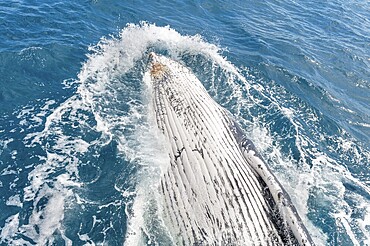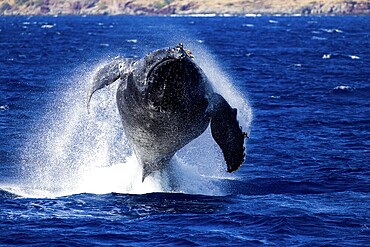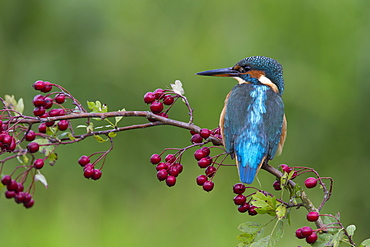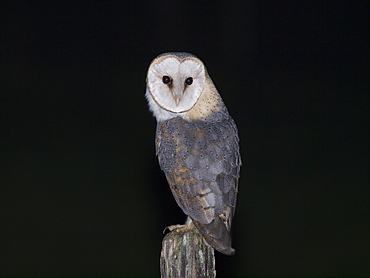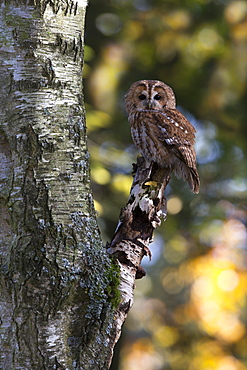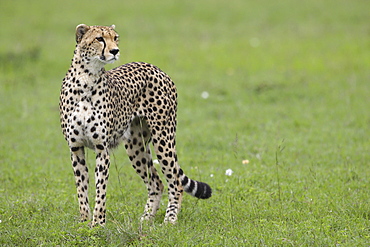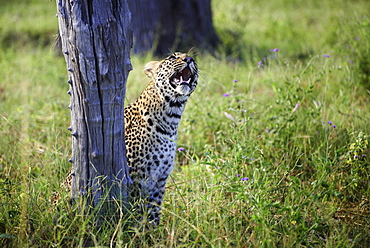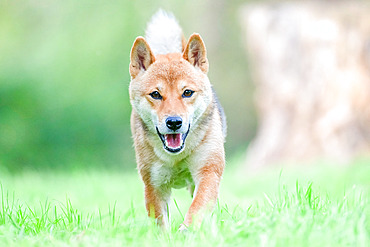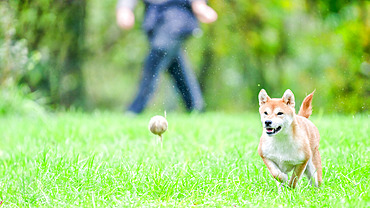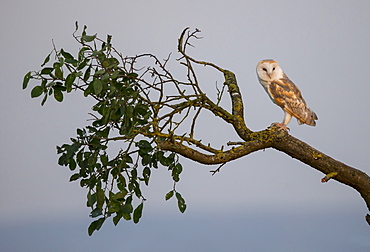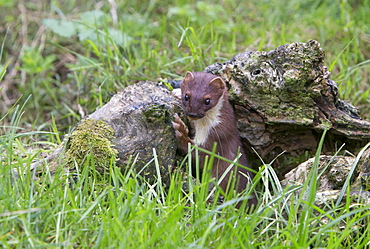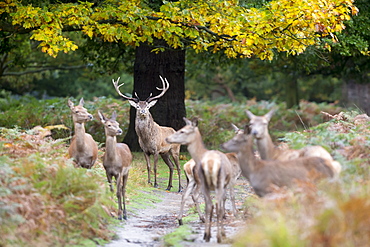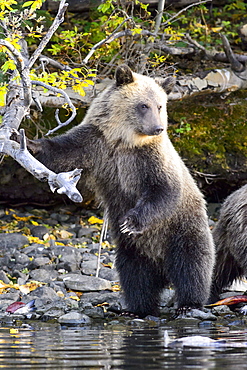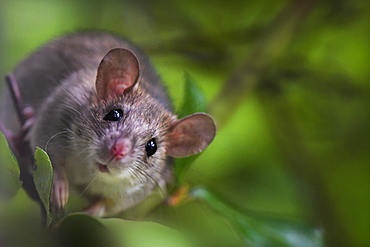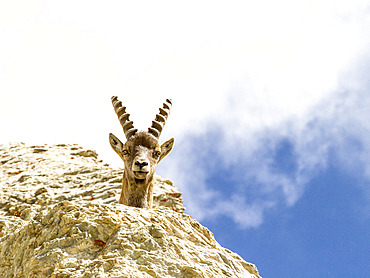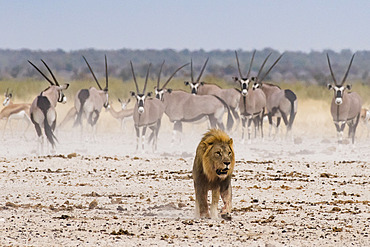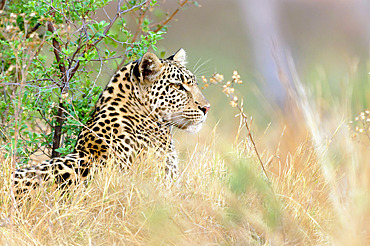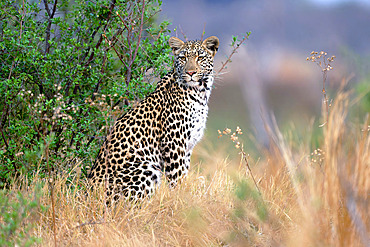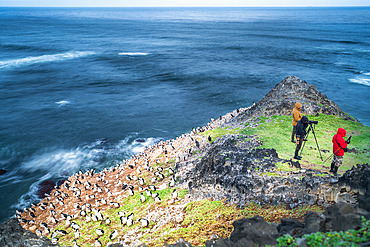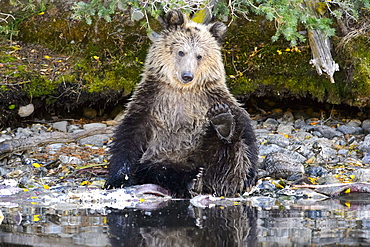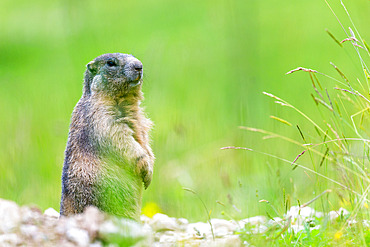Results
2 results found
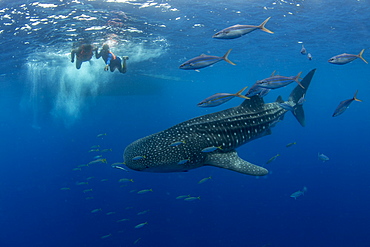
Whale shark (Rhincodon typus) with rainbow runner observed by a tourist and guide in Honda Bay, Palawan, The Philippines, Southeast Asia, Asia
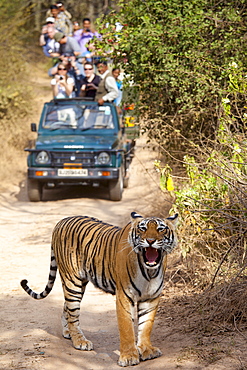
Tourists watch female Bengal tiger, Panthera tigris tigris, in Ranthambore National Park, Rajasthan, India

Goliath grouper (Epinephelus itajara) observed by diver, Molasses Reef, Key Largo, Florida, United States of America, North America
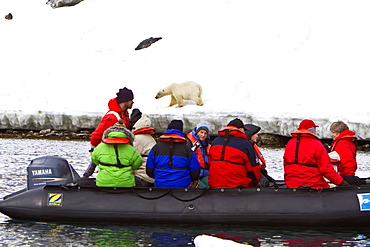
Polar bear (Ursus maritimus) observed by National Geographic Explorer along the northwestern coast of Spitsbergen in the Svalbard Archipelago, Norway
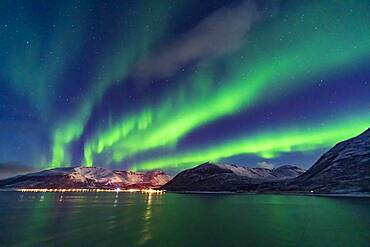
A fine display of aurora in curtains across the north, October 19, 2019, observed from the upper Deck 9 of the ms Trollfjord on the southbound voyage north of Tromsø along the Norwegian coast. Illumination is partly from the waning gibbous Moon.
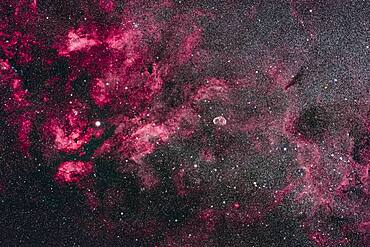
This is the central area of Cygnus and its bright Milky Way starcloud surrounded by red nebulosity. At left is the star Sadr (gamma Cygni) with the complex of nebulosity catalogued as IC 1318. At centre is the distinct Crescent Nebula, NGC 6888, a expanding nebula created by winds from a hot Wolf-Rayet star. At bottom left is the star cluster Messier 29, though looking a little lost in the rich starfields here. At top is the cluster IC 1311, looking more obvious than M29 but not observed visually and included in the NGC catalog. Odd. At far right are the large and loose star clusters NGC 6883 and NGC 6871, the latter an obvious binocular sight. To the left of Sadr is the small cluster NGC 6910. The dark nebulas B145 and LDN 862 are at right. The small emission nebula at bottom is Sharpless 2-104.
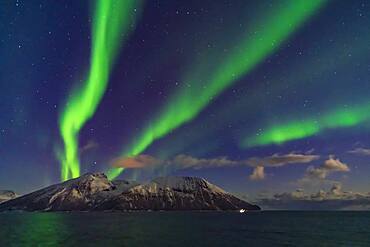
A fine display of aurora in curtains across the north, October 19, 2019, observed from the upper Deck 9 of the ms Trollfjord on the southbound voyage north of Tromsø along the Norwegian coast. Illumination is partly from the waning gibbous Moon.
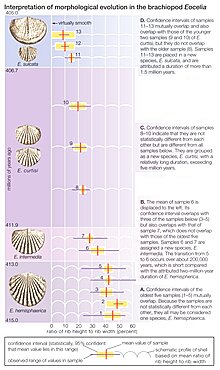
The evolution of the brachiopod Eocelia. The horizontal bars indicate the observed range of rib strength among fossilized finds.
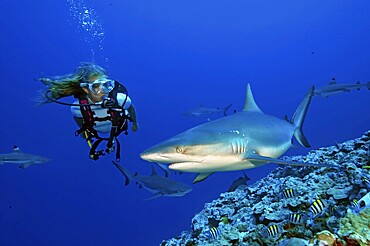
Diver observing Grey reef shark (Carcharhinus amblyrhynchos) at close range while scuba diving, Pacific Ocean, Yap Island, Yap State, Caroline Islands, FSM, Federated States of Micronesia, Australia, Oceania
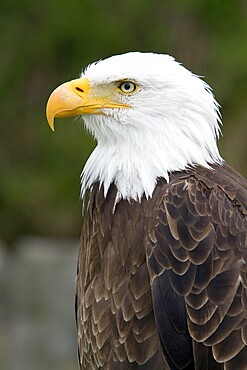
Bald eagle, Haliaeetus leucocephalus, Eagle perched and watching, Portrait, Profil, Close-up, Province of Quebec, Canada
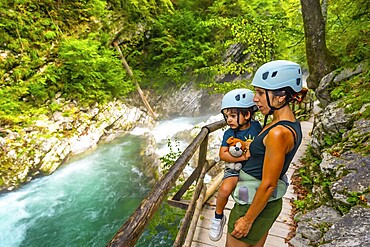
Mother carrying her son while observing stunning turquoise radovna river rapids flowing through vintgar gorge near bled, slovenia

Leopard (Panthera pardus), adult, observed, alert, lying, on ground, Sabi Sand Game Reserve, Kruger National Park, South Africa, Africa
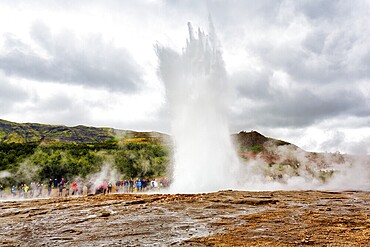
Active Strokkur, tourists observe eruption, high temperature area Haukadalur, tourist attraction at the Golden Circle, Sudurland, Iceland

Leopard (Panthera pardus), adult, observed, alert, portrait, Sabi Sand Game Reserve, Kruger National Park, South Africa, Africa

Leopard (Panthera pardus), adult, observed, alert, lying, on ground, Sabi Sand Game Reserve, Kruger National Park, South Africa, Africa
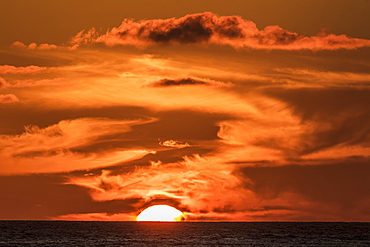
The Setting Sun Observed From The Kona Coast, Kona, Island Of Hawaii, Hawaii, United States Of America

A Reef Manta Ray (Mobula (formerly Manta) alfredi) hovers over a reef cleaning station off the Kona Coast, the Big Island, Hawaii, USA. This particular female manta with a missing left cephalic lobe has been observed by divers and snorkelers at Kona since
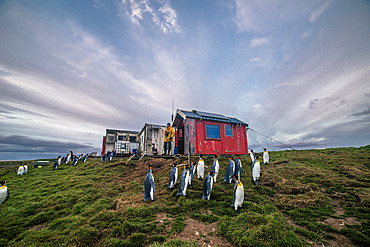
A birdwatcher is on the lookout for a particular penguin, which left for sea about a week ago. He needs to catch it just as it returns to land, before it enters the colony to feed its chick. This is to recover the GPS tag glued to its plumage, which has measured a large number of parameters (dive depth, immersion time, water temperature and salinity, and above all GPS position). Cabane Guetteur, Ratmanoff king penguin colony, Courbet peninsula, Kerguelen archipelago.
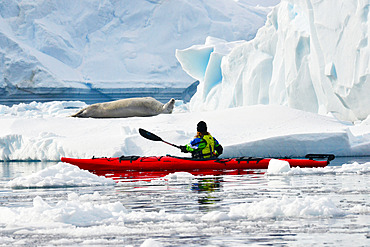
Kayakist inear a Weddel seal in Andvord bay near Neko Harbour. Cruise on board Exploris One. Antarctic.
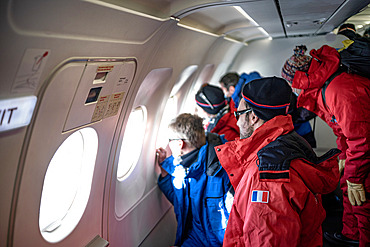
Team of Antarctic expeditionaries watching the landscape through the windows of the Airbus A320 carrying them from Hobart;Tasmania) to Mario Zucchelli;Italian coastal Antarctic base), as they approach the latter. These are the first summer campers. In red are those who will then take a Basler to the French coastal summer station of Cap Prud'Homme or Robert Guillard. They'll spend a few days opening it up and warming it up, before moving on to the Dumont d'Urville base;6km from Cap Prud'Homme), marking the end of wintering there. In blue: the expeditionaries bound for Concordia.
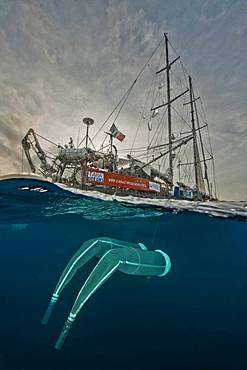
Tara Oceans Expeditions - May 2011. Tara with deployed plancton nets. On "station", the boat is drifting without engine or sails. Tara Oceans, a unique expedition: Tara Oceans is the very first attempt to make a global study of marine plankton, a form of sea life that includes organisms as small as viruses and bacterias, and as big as medusas. Our goal is to better understand planktonic ecosystems by exploring the countless species, learning about interactions among them and with their environment. Marine plankton is the only ecosystem that is almost continuous over the surface of the Earth. Studying plankton is like taking the pulse of our planet. Recently, scientists have discovered the great importance of plankton for the climate: populations of plankton are affected very rapidly by variations in climate. But in turn they can influence the climate by modifying the absorption of carbon. In a context of rapid physico-chemical changes, for example the acidification observed today in the world's oceans, it is urgent to understand and predict the evolution of these particular ecosystems. Finally, plankton is an astonishing way of going back in time ? a prime source of fossils. Over the eons, plankton has created several hundred meters of sediment on the ocean floors. This allows us to go back in time, to the first oceans on Earth, and better understand the history of our biosphere. More than 12 fields of research are involved in the project, which will bring together an international team of oceanographers, ecologists, biologists, geneticists, and physicists from prestigious laboratories headed by Eric Karsenti of the European Molecular Biology Laboratory. Galapagos
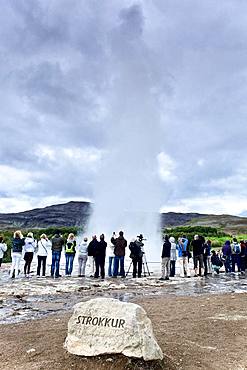
Tourists watching the gushing of a geyser: hot water coming out of the Strokkur geyser, Geysir site, Iceland.
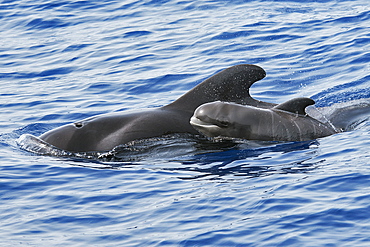
Calderón (Globicephala macrorhynchus). Breeding with an adult, probably his mother swimming on the surface. The fetal lines of the newborn can be perfectly observed. Tenerife, Canary Islands.
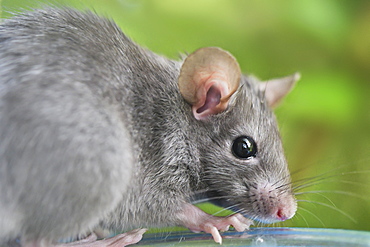
Young black rat (Rattus rattus) on bird feeder near a rural house, Auvergne, France. Other French name: Rat des greniers or Rat des champs
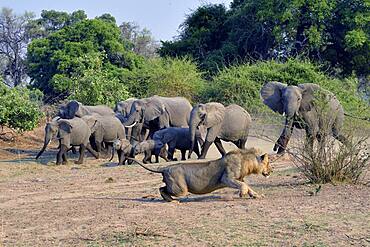
African savannah elephants (Loxodonta africana africana), the lion eventually stands up before the load of the right elephant, South Luangwa NP, Zambia
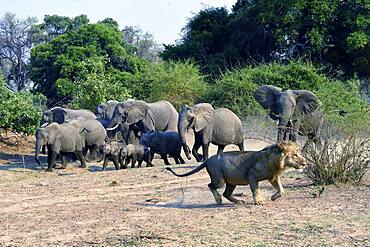
African savannah elephants (Loxodonta africana africana), the lion finally releases in front of the charge of the right elephant, South Luangwa NP, Zambia
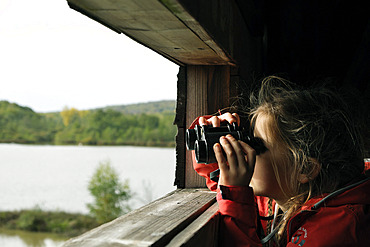
Girl observing birds through binoculars, etang de la Veronne, Etangs du Malsaucy et de la Veronne trail, Sermamagny, Territoire de Belfort, France
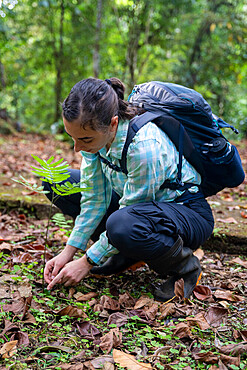
27-year-old researcher in front of the Pracaxi legume (Pentaclethra macroloba) at the "La Selva" research station in Puerto Viejo de Sarapiqui, Costa Rica
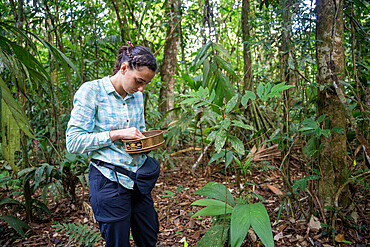
27-year-old researcher working on nitrogen exchange between bacteria and the roots of legumes in the rainforest at the "La Selva" research station in Puerto Viejo de Sarapiqui, Costa Rica
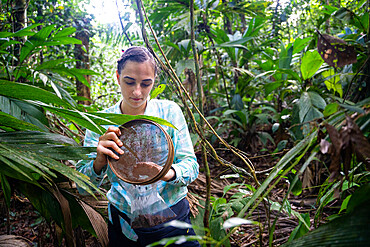
27-year-old researcher working on nitrogen exchange between bacteria and the roots of legumes in the rainforest at the "La Selva" research station in Puerto Viejo de Sarapiqui, Costa Rica
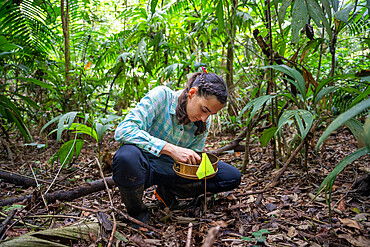
27-year-old researcher working on nitrogen exchange between bacteria and the roots of legumes in the rainforest at the "La Selva" research station in Puerto Viejo de Sarapiqui, Costa Rica
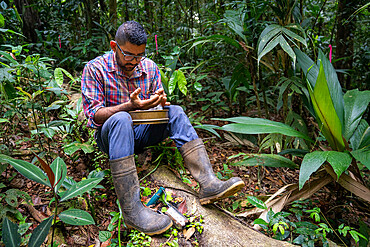
Research assistant working on nitrogen exchanges between bacteria and the roots of legumes in the tropical forest of the "La Selva" research station in Puerto Viejo de Sarapiqui, Costa Rica

CBD (cannabidiol) producer or cannabiculturist monitoring with a specific magnifying glass the development of trichomes before harvesting hemp heads, Montagny, France
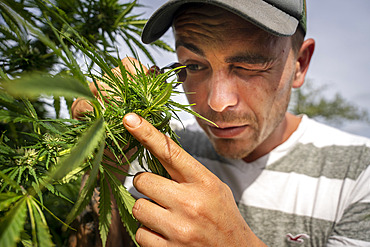
CBD (cannabidiol) producer or cannabiculturist monitoring with a specific magnifying glass the development of trichomes before harvesting hemp heads, Montagny, France
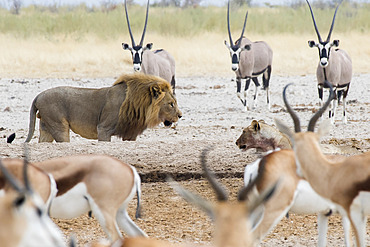
Lions (Panthera leo) between Oryx gazelles (Oryx gazella) and Springboks (Antidorcas marsupialis), Etosha National Park, Namibia
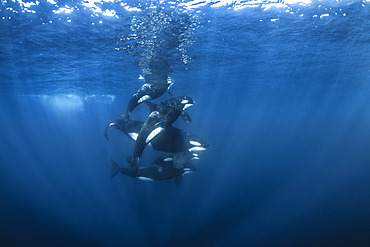
Orca (Orcinus orca) group off Mayotte. During the short passage off Mayotte, this group of killer whales was observed devouring a Mobula ray and a large tiger shark.

Three volunteer scientists examine an insect on a rock. The insect is Disker tenuicornis, a weevil described in the 1940s but not collected since the 1990s. Around Lac d'Armor, Grande Terre, Kerguelen archipelago.
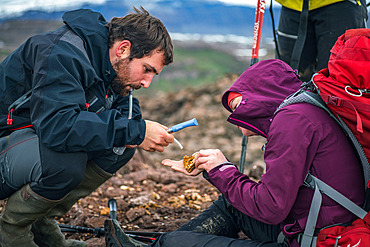
Collection of Disker tenuicornis, a weevil described in the 1940s but not collected since the 1990s, using a light, quick-to-use device, for inventory and study. Around Lac d'Armor, Grande Terre, Kerguelen archipelago.
